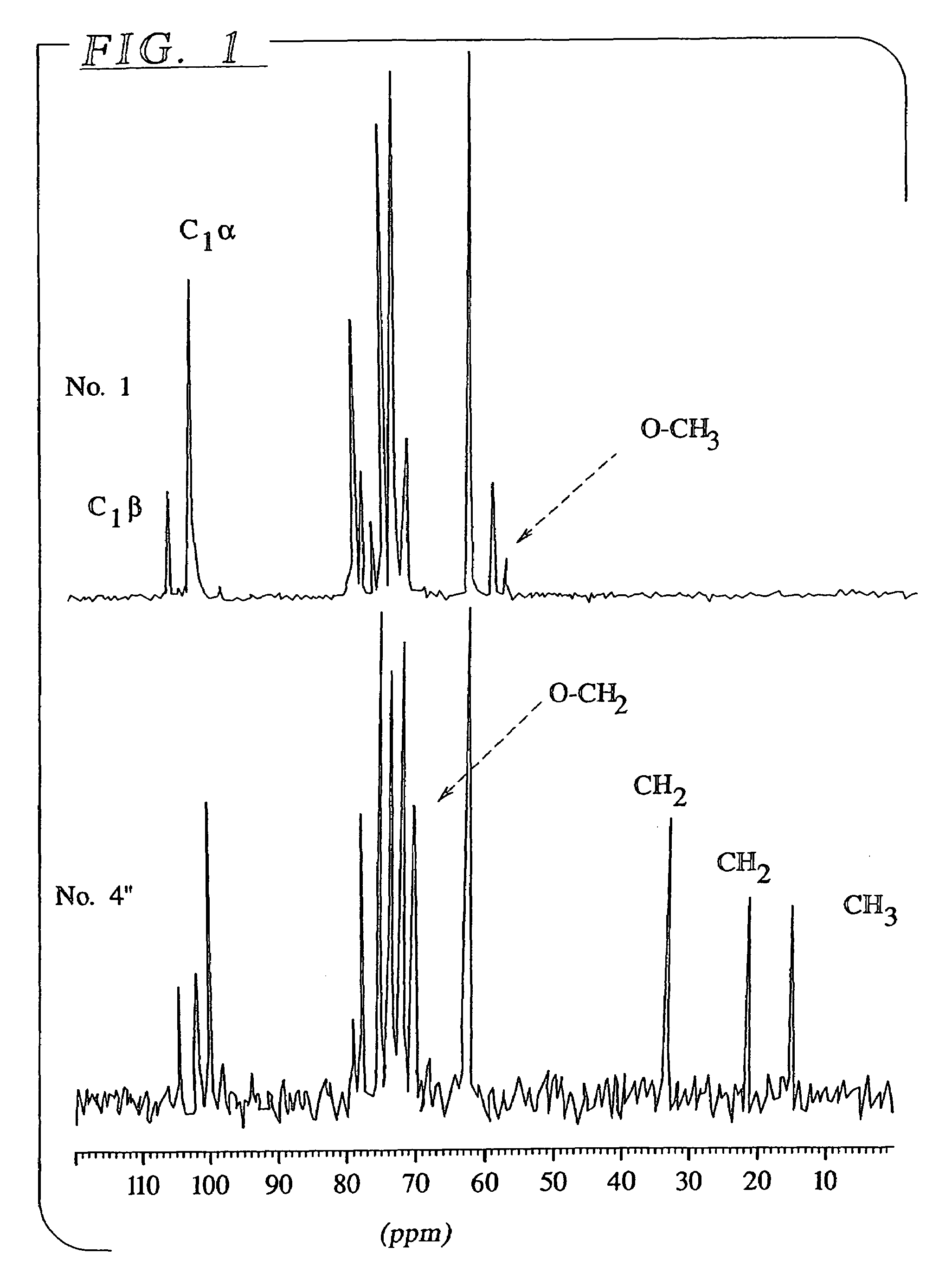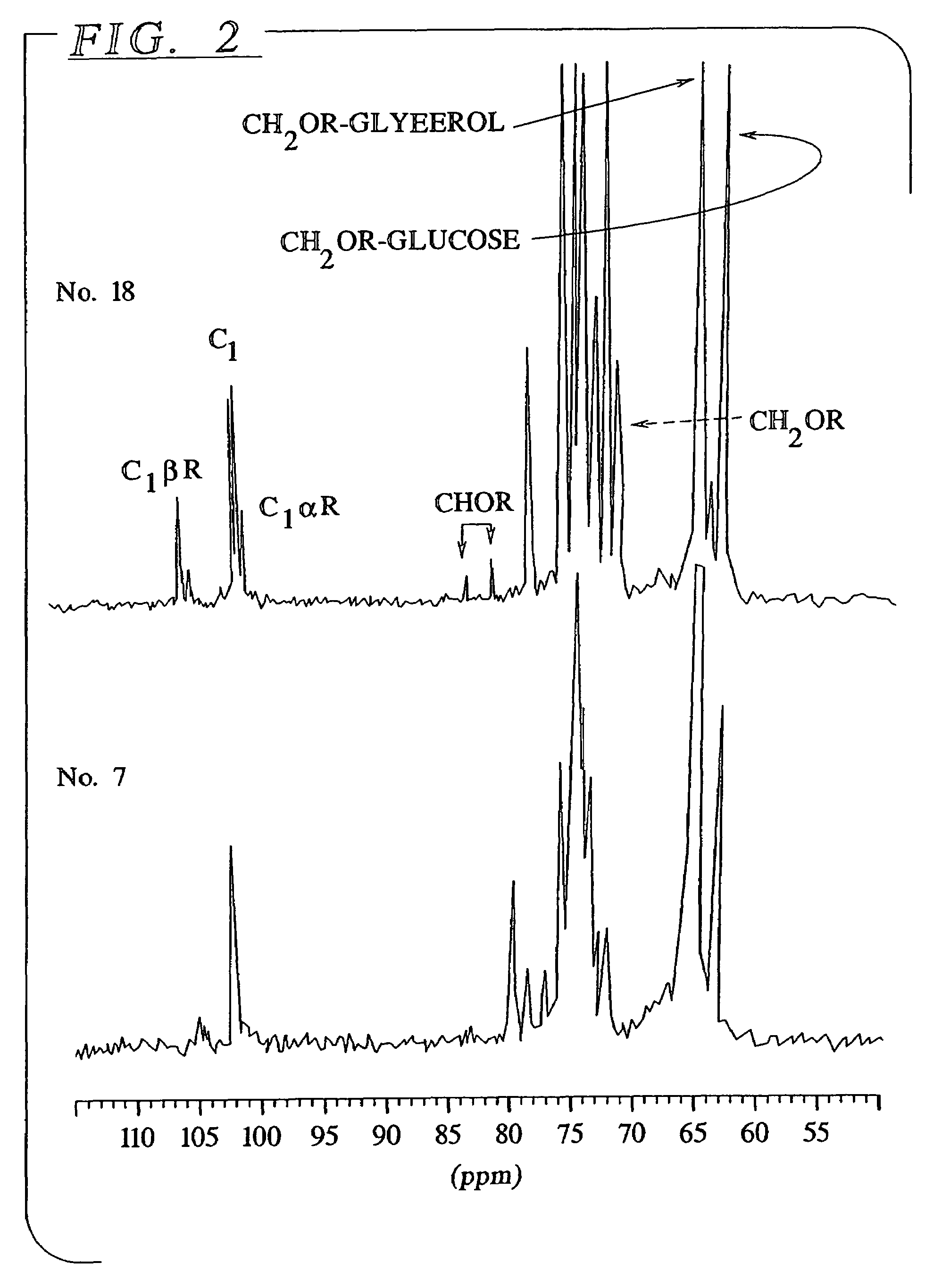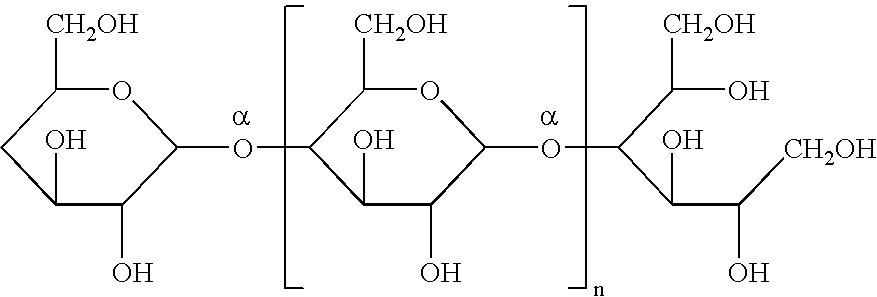Peritoneal dialysis solution containing modified icodextrins
a technology of icodextrin and peritoneal dialysis, which is applied in the field of peritoneal dialysis and solutions, can solve the problems of inability to use glucose, the availability of dialysis machines, and the possibility of infection and contamination, and achieve the effect of improving peritoneal dialysis solution and improving osmotic agents
- Summary
- Abstract
- Description
- Claims
- Application Information
AI Technical Summary
Benefits of technology
Problems solved by technology
Method used
Image
Examples
example 1
[0050]A reduced icodextrin was prepared by starting with 15 grams of maltodextrin dissolved in 20 ml of water. One gram of NaBH4 was added to the solution at room temperature and the solution was allowed to stand for 10 hours. The solution was then purified by passing it through an anionic exchange resin.
[0051]Three different maltodextrin starting materials were utilized. A low molecular weight (LMW) having a 3% degree of polymerization (DP) was utilized that contained 1% glucose, 37% maltose, 20% maltotetraose and 42% high molecular weight oligosaccharides. Second, a high molecular weight maltodextrin (HMW1) having a 14% degree of polymerization was utilized and contained 1% glucose, 2% maltose, 4% maltotetraose and 94% high molecular weight oliogosaccharides. Third, a second high molecular weight maltodextrin (HMW2) with a 9% degree of polymerization containing 1% glucose, 3% maltose, 7% maltotetraose and 90% high molecular weight oliogosaccharides was utilized. The products and s...
example 2
[0053]Utilizing the three different samples of maltodextrins discussed above with respect to Example 1, oxidation reactions were carried out on each sample by dissolving 15 grams of maltodextrin in 30 ml of water and combining the starch solution with an effective amount of NaOCl in 70 ml of a solution containing sodium hydroxide and having a pH of 8±0.5 at a temperature of 43° C. The combined solutions were allowed to stand for approximately 2 hours and the product solution was purified by gel permeation chromatography. Again, the products were analyzed using 13C NMR spectroscopy and were tested for stability under sterilization conditions as illustrated in Table 1. While the oxidation products, HMW1 ox HMW2 ox and LMW ox show contrasting results, this is attributed to the high molecular weight oxidized products not being completely purified.
[0054]
TABLE 1Absorbance (284 nm) variation after sterilization (121° C. 45 min)of 5% Icodextrin and modified Icodextrin solutionsNumber ofΔAbs...
example 3
[0055]In a third method of preparing stable osmotic agents in accordance with the present invention, icodextrin were glycosylated. The glycosylation reactions were performed using starch as the starting material and alcohol as the alkylating agent. Butanol and glycerol were chosen because of their biocompatibility. The molecular weight of the reaction products depends upon the temperature, time and acid concentration used.
[0056]The hydrolysis with methanol and butanol were performed by stirring a suspension of 200 mg of starch in 540 mg of alcohol containing 60 mg of acid at a temperature of about 100° C. for approximately 2 hours. The 13C NMR spectrum of the two products obtained from this reaction with methanol and butanol respectively are shown in FIGS. 1 and 2. Table 2 presents the degree of polymerization (DP) and the percentage of non-substituted reducing ends as a function of the reaction conditions. This data was obtained from the ratio between the appropriate NMR signals (1...
PUM
| Property | Measurement | Unit |
|---|---|---|
| temperature | aaaaa | aaaaa |
| degree of polymerization | aaaaa | aaaaa |
| degree of polymerization | aaaaa | aaaaa |
Abstract
Description
Claims
Application Information
 Login to View More
Login to View More - R&D
- Intellectual Property
- Life Sciences
- Materials
- Tech Scout
- Unparalleled Data Quality
- Higher Quality Content
- 60% Fewer Hallucinations
Browse by: Latest US Patents, China's latest patents, Technical Efficacy Thesaurus, Application Domain, Technology Topic, Popular Technical Reports.
© 2025 PatSnap. All rights reserved.Legal|Privacy policy|Modern Slavery Act Transparency Statement|Sitemap|About US| Contact US: help@patsnap.com



